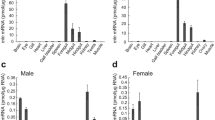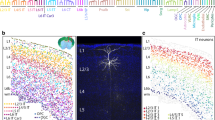Abstract.
Neuromuscular terminals of a single motoneuron to four muscles (CPV7a, GM5a, CV2, and CV3) in the stomach of the blue crab Callinectes sapidus showed structural evidence for the exocytotic release of dense-core vesicles exclusively at synapses. The primary evidence was the appearance of dense cores in the synaptic cleft, accompanied by indentations of the presynaptic or postsynaptic membrane. In their simplest form, these consisted of an omega-shaped figure of the presynaptic membrane enclosing one dense core, denoting release of a single dense-core vesicle. A larger indentation of the presynaptic membrane enclosing several dense cores denoted multiple release. A more complex form of multiple release was where the presynaptic membrane was normal, but the postsynaptic membrane elaborated into a sac projecting into the granular sarcoplasm and filled with dense cores. The postsynaptic sac in some instances was compressed into a thin, fingerlike extension, which lacked dense cores and, at its distal end, separated into small cisternae, suggesting a mechanism for membrane recycling. Profiles depicting single and multiple releases of dense-core vesicles were found more frequently at neuromuscular terminals that release relatively large amounts of transmitter with a single stimulus, such as CV2 and CV3, compared to those releasing smaller amounts, such as CPV7a and GM5a. The disparity in release sites among the four muscles of this single motor unit and the fact that many of the multiple-release figures were closely adjacent to the active zones for transmitter release suggest a possible modulatory role for dense-core vesicles in synaptic transmission. Such modulation may be long lasting, as implied by the postsynaptic sacs, which may permit prolonged release of the contents of their dense cores into the synaptic cleft. This is in keeping with the functional role of these stomach muscles, which is to be continuously active for long periods of time.
Similar content being viewed by others
Author information
Authors and Affiliations
Additional information
Received: 14 October 1996 / Accepted: 21 February 1997
Rights and permissions
About this article
Cite this article
Patel, V., Govind, C. Synaptic exocytosis of dense-core vesicles in blue crab (Callinectes sapidus) stomach muscles. Cell Tissue Res 289, 517–526 (1997). https://doi.org/10.1007/s004410050897
Issue Date:
DOI: https://doi.org/10.1007/s004410050897




